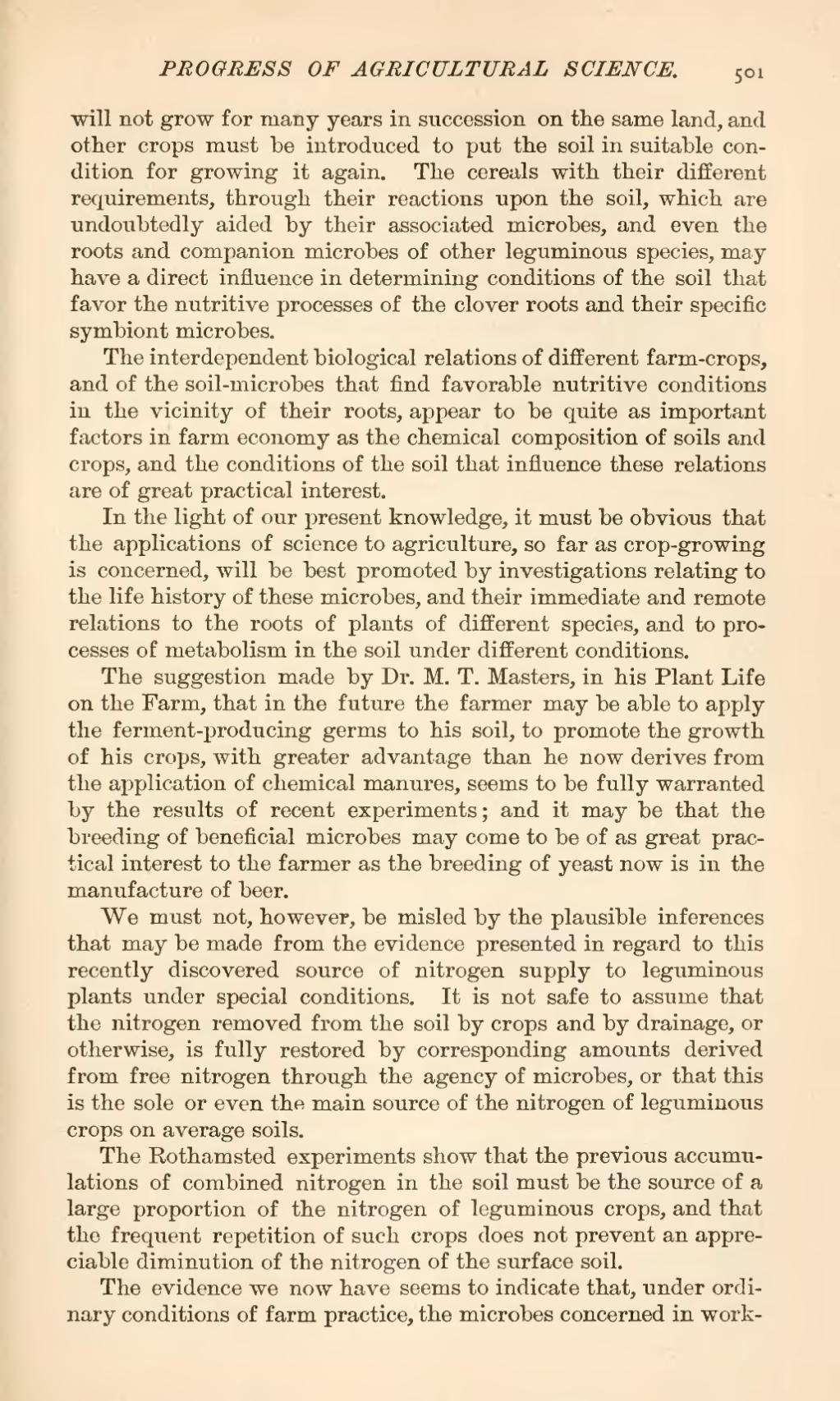will not grow for many years in succession on the same land, and other crops must be introduced to put the soil in suitable condition for growing it again. The cereals with their different requirements, through their reactions upon the soil, which are undoubtedly aided by their associated microbes, and even the roots and companion microbes of other leguminous species, may have a direct influence in determining conditions of the soil that favor the nutritive processes of the clover roots and their specific symbiont microbes.
The interdependent biological relations of different farm-crops, and of the soil-microbes that find favorable nutritive conditions in the vicinity of their roots, appear to be quite as important factors in farm economy as the chemical composition of soils and crops, and the conditions of the soil that influence these relations are of great practical interest.
In the light of our present knowledge, it must be obvious that the applications of science to agriculture, so far as crop-growing is concerned, will be best promoted by investigations relating to the life history of these microbes, and their immediate and remote relations to the roots of plants of different species, and to processes of metabolism in the soil under different conditions.
The suggestion made by Dr. M. T. Masters, in his Plant Life on the Farm, that in the future the farmer may be able to apply the ferment-producing germs to his soil, to promote the growth of his crops, with greater advantage than he now derives from the application of chemical manures, seems to be fully warranted by the results of recent experiments; and it may be that the breeding of beneficial microbes may come to be of as great practical interest to the farmer as the breeding of yeast now is in the manufacture of beer.
We must not, however, be misled by the plausible inferences that may be made from the evidence presented in regard to this recently discovered source of nitrogen supply to leguminous plants under special conditions. It is not safe to assume that the nitrogen removed from the soil by crops and by drainage, or otherwise, is fully restored by corresponding amounts derived from free nitrogen through the agency of microbes, or that this is the sole or even the main source of the nitrogen of leguminous crops on average soils.
The Rothamsted experiments show that the previous accumulations of combined nitrogen in the soil must be the source of a large proportion of the nitrogen of leguminous crops, and that the frequent repetition of such crops does not prevent an appreciable diminution of the nitrogen of the surface soil.
The evidence we now have seems to indicate that, under ordinary conditions of farm practice, the microbes concerned in work-
